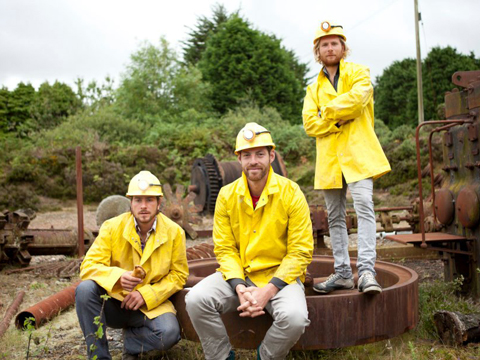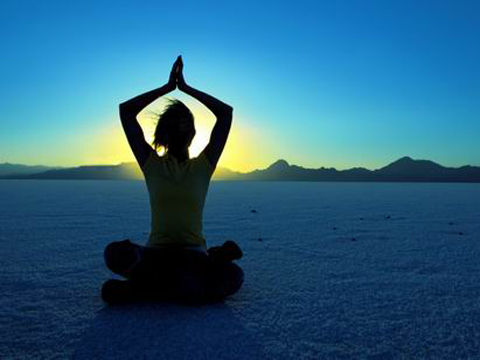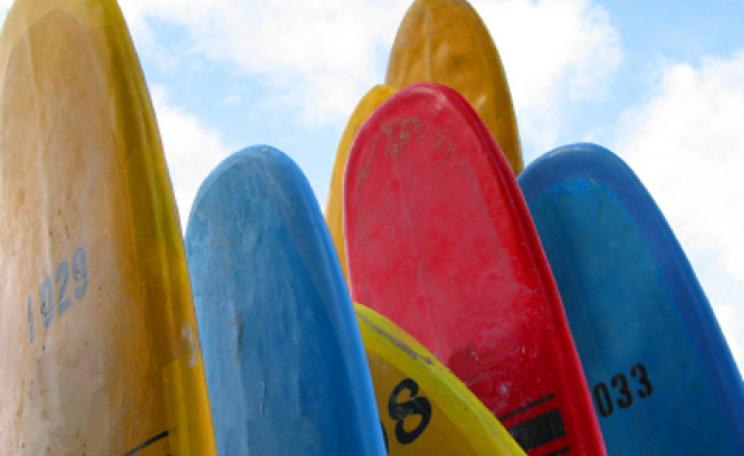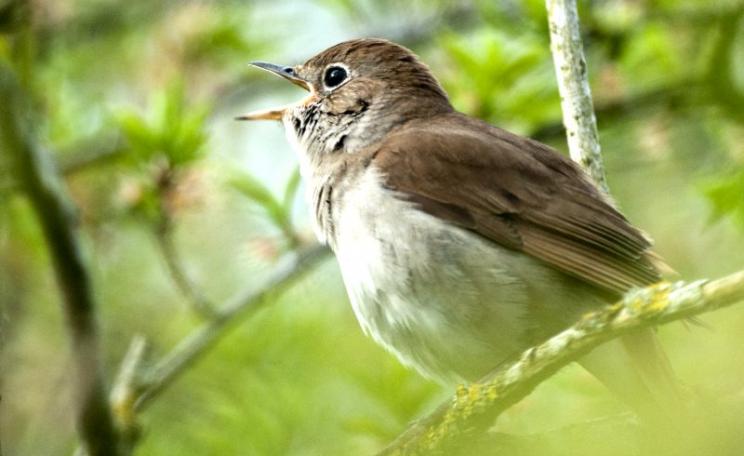Racing around on all fours isn’t what I’d normally do on a trip to the park, but here I am, making my way across the grass on my hands and feet. Ahead of me is Colin Holding, a Wild Fitness coach, who is teaching us the fitness method known as ‘natural movement’. My fellow trainees and I have just played a game of tag, jumping upon one another’s shadows in the sun, and now we are following Colin across the park on all fours, like animals. Up ahead is a bench – Colin leaps over this, landing in a squat position, and we all follow suit. After this we weave in and out of a line of trees, before leaping high in the air in a series of joyous star jumps. Yes, I feel about eight years old, but I also feel really good.
Natural movement
Wild Fitness is one of a handful of companies across the world that extols the fitness method known as ‘natural movement’ (sometimes referred to as ‘primal fitness’). The essence of this is a return to our inherent animal nature: moving without tension in the natural environment, with the simple goal of feeling good. No boring gym equipment in sight. What’s not to like? Once upon a time the animal Homo sapiens (that’s us) bounded over the grassy plains of Africa, as agile, fit and free as any other animal. We moved because we are supposed to move – because it makes us mentally and physically healthy and it was how we got around and how we hunted. Since then we have evolved into an endlessly consuming, tired, car driving, unfit species that is prone to injury and depression. ‘Moving outside in nature is what human beings are meant to do,’ says Colin. ‘It improves our health and it makes us happy.’
Wild Fitness was founded in 2001 by Tara Wood, who grew up exercising in the wilds of Kenya. After years of studying health and exercise, she found the fitness industry and its obsession with aesthetics and competition utterly bemusing. Exercise was done in a manmade environment such as the gym and everyone looked pretty unhappy. Left cold by it all, she decided to do some experiments. She took groups of people into the wilderness and got them to do some fun workouts. The results, not surprisingly, included a massive boost in mood and health, and Wild Fitness was born.
 Set up to celebrate enjoyable, outdoor exercise and give people the chance to try it, the company philosophy is this: ‘As hunter-gatherers, humans were strong, lean, fast and agile. We didn’t need supplements or equipment to keep fit and healthy – nature provided everything we needed. Moving with skill and playfulness creates a lean, flexible, injury-free body. Exercising ‘wild’, you will fall in love with your body and the environment once more.’
Set up to celebrate enjoyable, outdoor exercise and give people the chance to try it, the company philosophy is this: ‘As hunter-gatherers, humans were strong, lean, fast and agile. We didn’t need supplements or equipment to keep fit and healthy – nature provided everything we needed. Moving with skill and playfulness creates a lean, flexible, injury-free body. Exercising ‘wild’, you will fall in love with your body and the environment once more.’
Green exercise
Tara’s company offers fitness holidays in the wild and beautiful surrounds of the Isle of Wight, Crete and Kenya, as well as one-to-one and group training sessions in London parks. Today I am experiencing the latter. Instead of being cooped up in a gym or a fitness studio, we are working out in the fresh air, amongst the trees; the sun is shining and the birds are singing. The psychological benefits of exercising in the natural environment have been well documented. A recent study by the University of Essex, for example, showed that exercising in nature for just five minutes dramatically improves mood. Moving in nature is known as ‘green exercise’ and it is being suggested as an alternative to antidepressants by the mental health charity Mind. What's more, a study by the charity found that over 90 per cent of people feel happier and more confident after green exercise.
Today’s green workout with Colin has included a whole range of skills and movements: we have played games on all fours, on our feet and in mid-air; we have run, jumped, danced and caught things, and we have done a happy amount of star jumps. Of course we are in a park. A wilder workout for an experienced practitioner of natural movement might include a river swim, running barefoot over fields, lifting logs, climbing a tree and clambering up steep slopes. ‘We should be generalists,’ says Colin. ‘That means exercising all parts of your body and working on all your movement skills, rather than just focusing on one type of movement.’ Instead of just running or playing tennis twice a week, natural movers use a whole range of skills and movements within one workout. This is, of course, how an animal moves, using its dexterity and motion skills to move across open land and water, scale trees and negotiate obstacles.
 Posture and poise
Posture and poise
Colin continually brings us all back to a squat position. This is the low stance that toddlers use when they’re resting. Knees are bent and feet are flat on the floor. ‘The squat is a natural position,’ says Colin, ‘and very good for the body. For example it really helps the digestive system.’ Because we all sit on chairs we lose the ability to squat. Most people’s ankles aren’t sufficiently flexible or strong to do it for long. But in Asia and the Middle East, it’s common to see people resting in squat stance. A practitioner of natural movement will squat to land after jumping and squat to pick something up.
Natural positions (such as the squat) allow us to maintain good posture during movement, and only with good posture can the breath can be free and the muscles relaxed. This both prevents injury and reduces stress. ‘Sports such as rowing, cycling and gym work involve unnatural movement,’ says Colin. ‘They reinforce our adaptation to an unnatural position (i.e. sitting) and encourage bad posture and musculoskeletal imbalances.’ A big part of natural movement is having a clear mind to better cope with stress. ‘It’s not about becoming a caveman again,’ says Colin. ‘But it is about having the skills to meet the modern equivalent of a lion, whether that’s a bad day at work or a relationship problem.’ Having got us to move around the park, Colin gives us reflex games to do in pairs that teach the art of a clear mind. I must catch a stick with my eyes closed, via a noise signal. Over time, exercises such as this will help to reduce the stress born of overthinking.
The main effect of primal fitness is enjoyment – it feels good to be outside and good to move, while playing exercise games with others is great fun. ‘Play stimulates the release of oxytocin, which makes us feel good,’ explains Colin. Oxytocin is known as the ‘love hormone’; it reduces anxiety and is released via pleasurable touch (such as holding hands), at the point of orgasm, during breastfeeding and in play. It’s hard to muster a lot of it on your own. Wild Fitness and other schools of natural movement place huge emphasis on ‘tribe’ mentality. We are social animals and benefit from getting fit with others – it’s more fun that way. Everyone on Colin’s wild workout day is an adult but we are all careering about the park like kids, dancing, leaping in the air and playing, and everyone has a smile on their face.
For more information, contact Wild Fitness on 020 3286 4886 or go to www.wildfitness.com.
Wild workout
Put primal fitness to the test with this 30 minute flab-busting workout. Incorporate these or similar exercises you’ve dreamt up to create your own bespoke wild workout. ‘Start with imagination and do things well within your capability,’ advises Colin. ‘If you start over-challenged you’ll get demoralised or injured or both. Take it easy and have lots of fun.’
• In an urban park or in the countryside, run barefoot for five minutes.
• Play a game with a partner: one of you demonstrates a dance move and the other copies. Keep changing the moves and then eventually swap leader and follower roles. Five minutes.
• Do some lifting: for example lift a stone or a log (of an appropriate weight for your strength). Lift by squatting, picking it up and putting it down twenty times. Five minutes.
• Do a reflex exercise with your partner: one of you holds a stick and (without warning) releases it. The other must catch it before it hits the ground. Five minutes.
• Bear crawl, keeping feet and hands on the ground, for two minutes.
• Find something to jump over, such as a series of fallen logs. Land in a squat after each jump. Five minutes.
• Finish by running and leaping into a series of joyous star jumps. Three minutes.
| READ MORE... | |
 |
GREEN LIVING The Ecologist meets…Hugh's Three Hungry Boys Channel 4's newest foodie series has plenty for eco warriors to love. The Ecologist catches up with Tim Cresswell to talk foraging |
 |
GREEN LIVING Top 10… natural ways to detox From upping your antioxidant intake to raising your yoga game, we round up 10 easy ways to detox – no dodgy pills or extreme diets involved |
 |
GREEN LIVING How to...beat the January energy slump naturally It’s the afternoon and you can feel that familiar energy slump kicking in. Forget coffee or chocolate, try a healthier alternative, or give yoga, massage or aromatherapy a go instead |
 |
GREEN LIVING Surfing: a greener way to get fit? Bidding farewell to summer doesn’t mean turning your back on outdoor sports, says Phoebe Doyle. When it comes to surfing, autumn’s where it’s at |
 |
GREEN LIVING Best of British: the three spots you have to swim in In an exclusive extract from Wild Swimming, author Daniel Start looks back at his best-ever wild dips |








